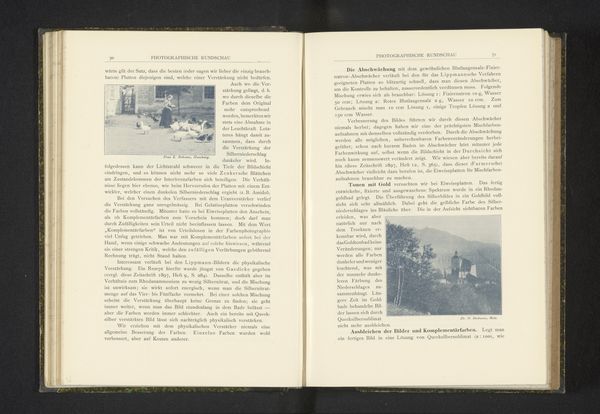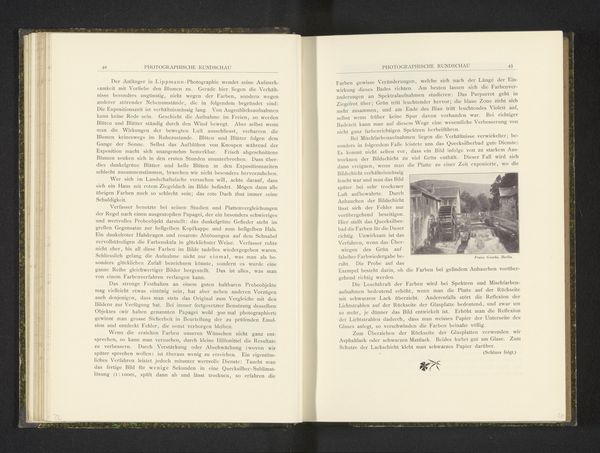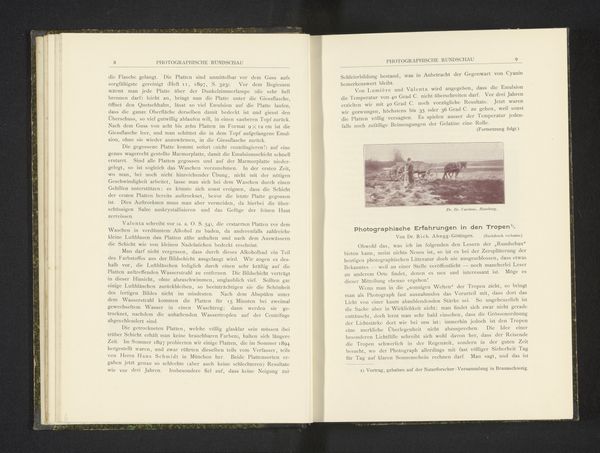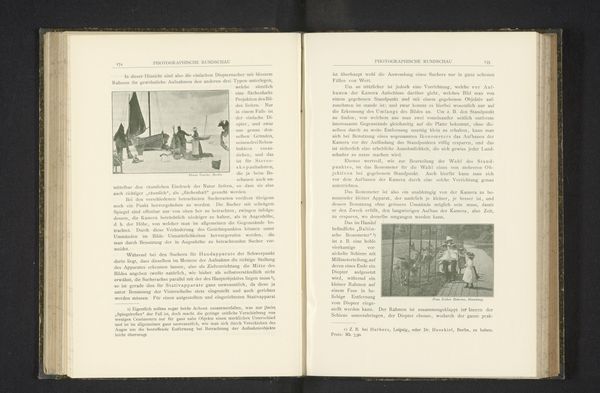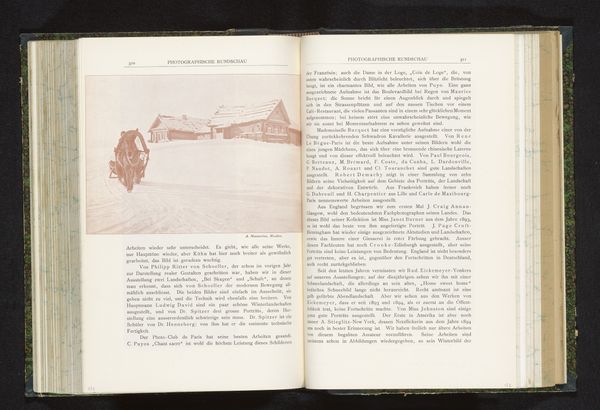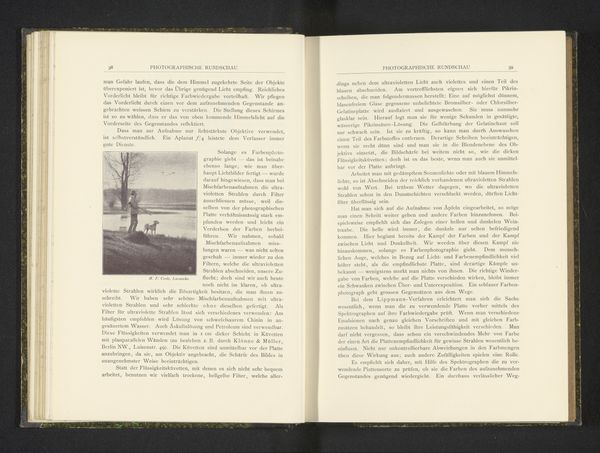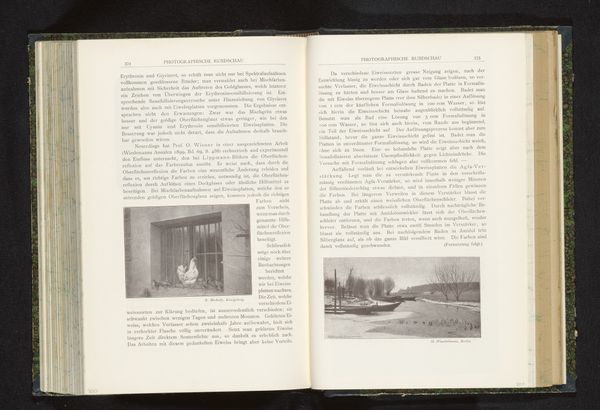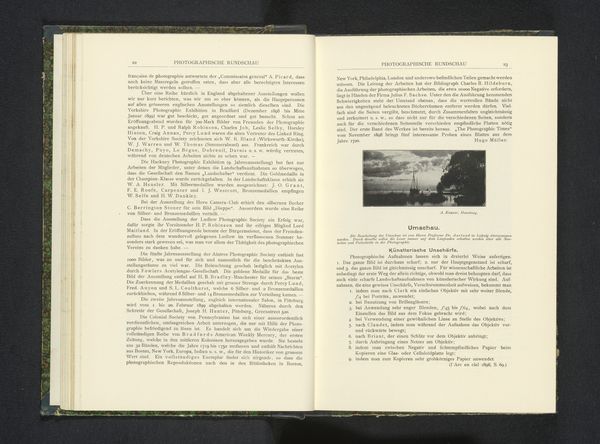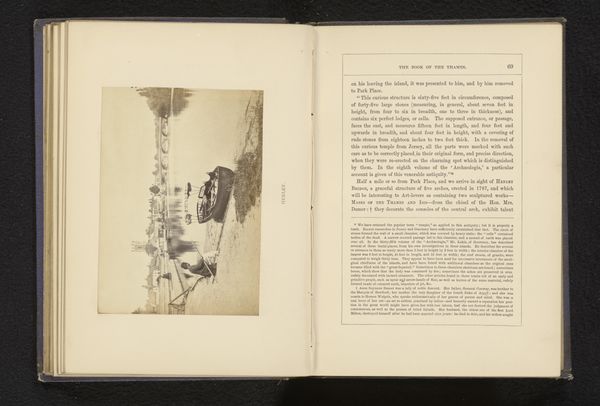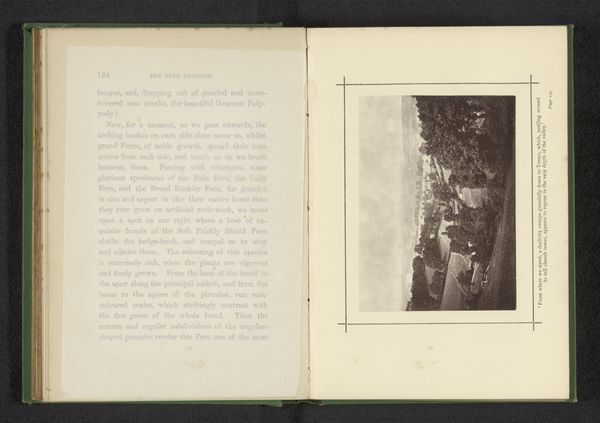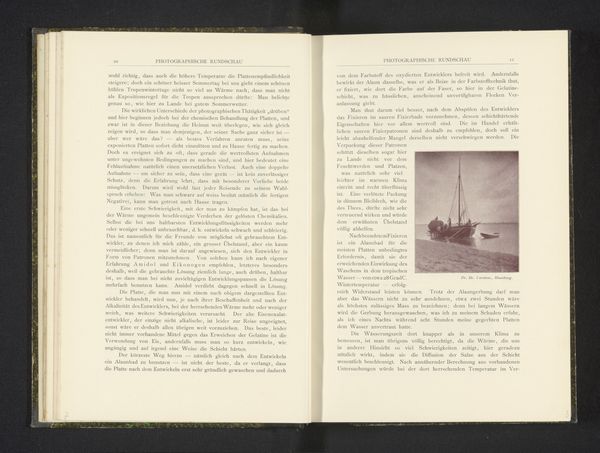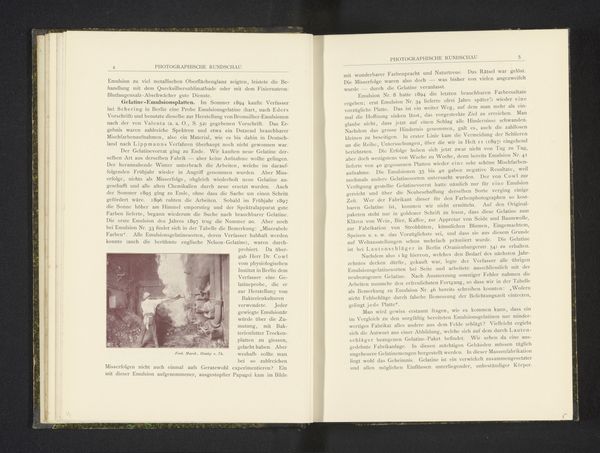
print, photography
# print
#
photography
Dimensions: height 93 mm, width 45 mm
Copyright: Rijks Museum: Open Domain
Editor: This spread, entitled "Man in een atelier," which seems to be a page from a larger printed publication dated before 1898 by P. Benthien, uses print and photographic mediums. There's a photo of what appears to be an artist working in his studio, the darkroom. The sepia tone evokes such an antiquated aesthetic... How does a historian such as yourself interpret such imagery? Curator: It is compelling. I see this photograph not merely as a portrait, but as a statement about the institutional space of art itself. This image appeared in a photography journal during a pivotal time. Photography was fighting for its legitimacy as fine art, competing with established forms like painting. What do you think is Benthien doing here? Editor: Almost trying to show the everyday life of creation itself... perhaps? Curator: Precisely. By depicting the photographer—likely Benthien himself, or a colleague—in his working environment, the image stakes a claim. It argues that artistic labor happens in real, often gritty, places, much like more traditionally respected art forms. This type of image bolstered claims for photography as "art" by demonstrating photographic working conditions. The presence of text and the photographic image suggests its connection to disseminating information and framing visual culture to shape public opinion. It makes the unseen, seen. Editor: That’s interesting! So, this isn’t just a nice picture, but a strategic maneuver in a cultural debate about how society accepts different media of expression and art? Curator: Exactly. We should always ask, who gets to decide what is “art,” and what are the cultural, social, and, frankly, political forces at play? What seemed merely documentary could then reveal deeper implications. Editor: This completely changes how I view this photograph! The sociopolitical forces that frame creative expression are, I think, much more clear to me now!
Comments
No comments
Be the first to comment and join the conversation on the ultimate creative platform.
